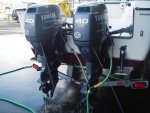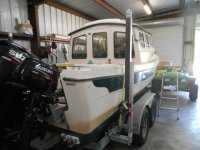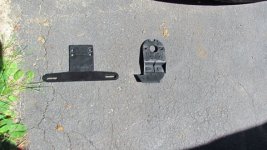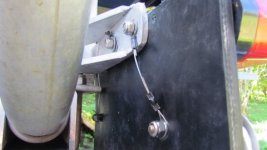Old Thread, and I missed Sunbeam's question referring to supplemental LED light bar at the level of the Gunnel of the C Dory 22.
How did you attach this to the trailer or boat? I'm not in as "dire" need of one now that I have the LED trailer lights, but I still like the idea. However I found that all the logical attachment points on the boat (aft cleats, etc.) were not usable because the engine(s) were in the way of something running across
I have approached this several ways. One s to lash the lights forward of the cleats-- Depending on the boat (22, 25 and 255 are all different), I also can lash the supplemental light bar to the "PVC standoffs"--whcih are about 2 feet forward of the transom. I have a "T" in the bar to sit on the gunnel, and keep it from rotating downward. I have also used separate pieces for each side, and lashed directly to the cleat--with only the wire between.
The question of aluminum trailers: They are most common on the East Coast and Gulf Coast. They last well--mine is 16 years old, and looks like new. The axle spindles are steel. The bearings and spindles should be covered with waterproof grease--same for the inner part of the hub. There can be some surface rust on the castle nut on the spindle--but again, usually these are fine. Backing plates are usually galvanized, as are the axles.
The trailer I had break, was galvanized--and it was the square tongue tubing which failed. Often galvanized will rust from the inside. The Aluminum is an "I" beam, so all sides can be easily seen.
License plate brackets--made of plastic so if you back over something it will bend, rather than break off, as solid platen. (since the license plate should be below the light, to be illuminated by the trailer tail lights, it ends up very near the ground. I have never lost a license plate, but have replaced several of the holders. I always check them on my walk around the trailer every two hours. when on the road.
The Easy Loader trailers-are quite popular--and generally good trailers for the C Dory one. The only exception is the one my neighbor got for his Tom Cat 24--it seemed too light for that heavy a boat--and I suspect it was a pontoon boat trailer, which the dealer had in stock (?)> The boat is rarely trailered, except for repair and bottom paint--and has held up fine..




